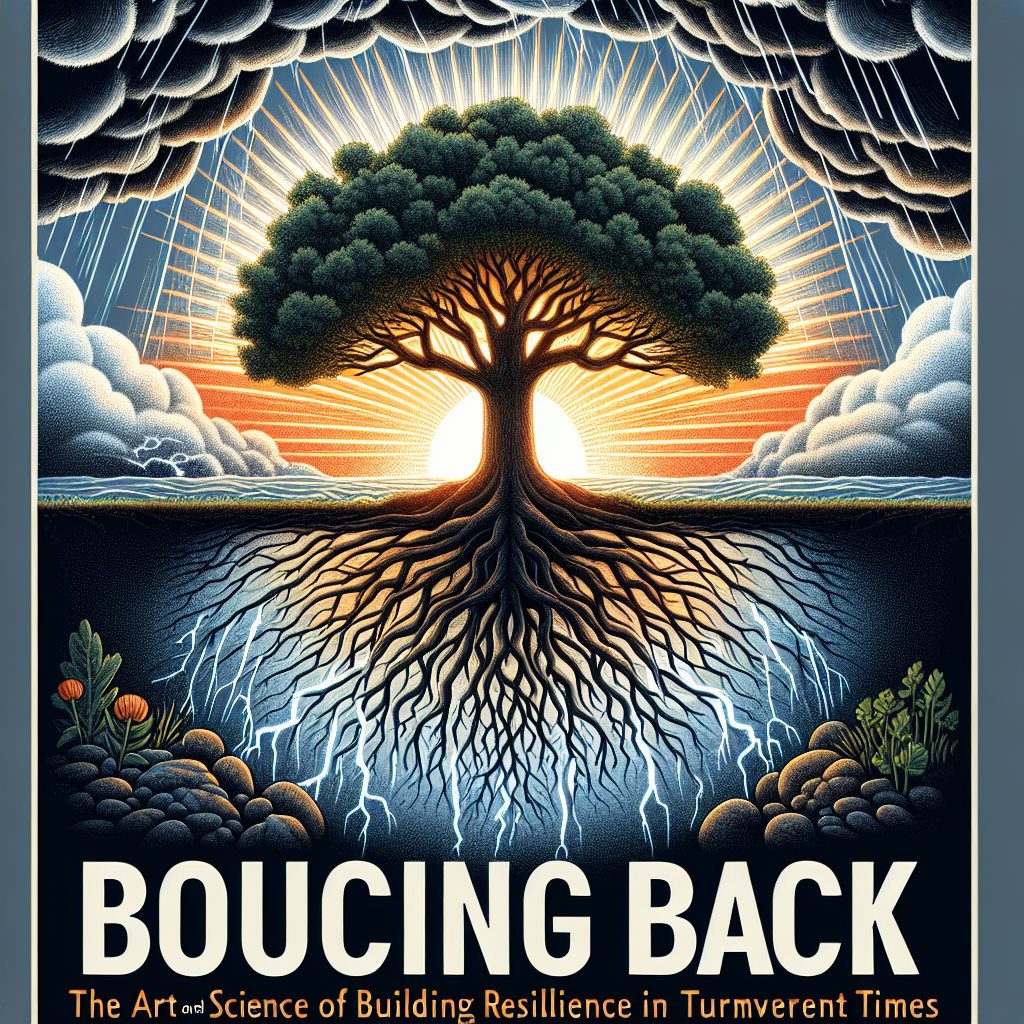
Introduction
Life is an unpredictable rollercoaster, filled with ups, downs, and unexpected twists. Bouncing back from setbacks isn’t just a desirable skill; it’s essential to thriving in today’s fast-paced and often turbulent world. Whether you’re navigating personal challenges, professional setbacks, or broader societal issues, resilience is your lifeline, your anchor. In this article, we delve deep into "Bouncing Back: The Art and Science of Building Resilience in Turbulent Times," exploring how you can cultivate the power of resilience and transform challenges into opportunities for growth. Get ready to embrace the journey of resilience, armed with insights that blend both psychology and practical strategies to empower your bouncing back.
Understanding Resilience
The Definition and Importance of Resilience
Resilience can be defined as the ability to adapt, recover, and grow amidst adversity. It’s not merely about enduring hardship but rather thriving in the face of it. Resilient individuals show remarkable mental toughness; they view challenges through a lens of opportunity, learn from failures, and persist despite setbacks.
Table 1: Characteristics of Resilient Individuals
| Characteristics | Description |
|---|---|
| Adaptability | Ability to adjust to new circumstances |
| Optimism | Maintaining a hopeful outlook even in tough times |
| Emotional Awareness | Understanding and managing one’s emotions effectively |
| Strong Social Networks | Building supportive relationships that provide encouragement |
| Problem-solving Skills | Developing innovative solutions to challenges |
Bouncing back is more than a reactive process; it’s a proactive journey. In times of turbulence—be it economic downturns, personal crises, or global pandemics—resilience becomes not just a survival skill but a competitive advantage.
The Science Behind Resilience
Research indicates that resilience is not solely a trait one is born with; it can be nurtured and developed over time. According to studies from the American Psychological Association, resilience involves behaviors, thoughts, and actions that can be learned through experience. Factors such as genetic predispositions, environmental influences, and personal life experiences contribute to how resilient a person may be.
Building Blocks of Resilience
When discussing "Bouncing Back: The Art and Science of Building Resilience in Turbulent Times," it’s crucial to address the core components that create a resilient mindset.
1. Positive Relationships
One of the strongest predictors of resilience is the presence of supportive relationships. Surrounding yourself with positive, encouraging people can foster a sense of belonging and purpose.
Case Study: The Resilient Community of New Orleans
After the devastation of Hurricane Katrina, the resilience of the New Orleans community shone brightly. Neighbors banded together, rebuilding not just homes but also supporting one another emotionally and financially. Their collective effort to uplift each other illustrates the profound impact of positive relationships during turbulent times.
2. Self-Care Rituals
Self-care is not a luxury; it’s a necessity, especially during challenging phases. Engaging in regular physical activity, practicing mindfulness, and maintaining a balanced diet contribute significantly to mental health.
Table 2: Self-Care Activities for Enhancing Resilience
| Activity | Benefits |
|---|---|
| Exercise | Reduces stress and anxiety |
| Meditation | Enhances emotional regulation |
| Journaling | Promotes self-reflection and clarity |
| Hobbies | Fosters creativity and joy |
Integrating self-care into your routine is an investment in your resilience – a way to recharge and prepare for future challenges.
3. Mindset and Attitude
A growth mindset is vital for resilience. This concept, developed by psychologist Carol Dweck, refers to believing that abilities and intelligence can be developed through dedication and hard work. Adopting a growth mindset can transform failures into opportunities for learning and growth.
Case Study: Thomas Edison
The legendary inventor, Thomas Edison, is a shining example of resilience. He famously stated, "I have not failed. I’ve just found 10,000 ways that won’t work." Edison’s approach to setbacks exemplifies a growth mindset; he viewed each failure as a step closer to eventual success.
4. Goal-Setting
Setting realistic and achievable goals is integral to resilience. Goals provide direction and purpose, and the act of achieving them reinforces a positive self-image.
Actionable Step: SMART Goals Framework
Utilizing the SMART (Specific, Measurable, Achievable, Relevant, Time-bound) criteria can enhance goal-setting effectiveness.
5. Emotional Regulation
The ability to manage one’s emotions during turbulent times is a crucial component of resilience. Techniques such as deep breathing, mindfulness, and cognitive reframing help in navigating adverse situations more effectively.
Challenges to Resilience
While resilience is essential, it’s vital to recognize that it is a journey peppered with challenges. Factors such as chronic stress, traumatic experiences, or lack of resources can impede one’s ability to bounce back.
Barriers to Building Resilience
- Fear of Failure: This common barrier can prevent individuals from taking leaps of faith or pursuing new opportunities.
- Negative Self-Talk: The inner critic can be detrimental to mental wellbeing, fostering a cycle of self-doubt and anxiety.
- Isolation: Lack of social support as a result of personal or societal factors can hinder one’s ability to recover from setbacks.
Cultivating Resilience in Daily Life
Creating a resilient lifestyle requires intentional actions and habits. Here are some actionable strategies for "Bouncing Back: The Art and Science of Building Resilience in Turbulent Times":
1. Practice Gratitude
A gratitude practice involves reflecting daily on what you are thankful for, helping shift focus from challenges to positivity.
2. Engage in Continuous Learning
Adopt a mindset of lifelong learning, whether through formal courses or self-study. Continually developing skills and knowledge enhances adaptability.
3. Volunteer
Giving back to the community not only fosters connections but also builds a sense of purpose, reinforcing social bonds and resilience.
4. Embrace Change
Cultivate an openness to change and uncertainty. Embracing the unknown is essential in building adaptability and resilience.
5. Seek Professional Help
When faced with overwhelming challenges, consulting a mental health professional can provide tools and strategies tailored to individual needs.
Conclusion
In conclusion, “Bouncing Back: The Art and Science of Building Resilience in Turbulent Times” highlights the essential components of resilience—a skill that is not only critical but also cultivatable. By harnessing the power of supportive relationships, fostering a growth mindset, and engaging in self-care practices, anyone can learn to navigate life’s hardships with grace and strength.
Resilience requires practice, patience, and perseverance; the journey may be challenging, but the rewards are profound. As you incorporate these insights into your life, remember that each setback is an opportunity to strengthen your resilience and emerge steadfastly grounded.
FAQs
1. What is resilience?
Resilience is the capacity to recover quickly from difficulties and adapt well to challenging life circumstances.
2. Can resilience be learned?
Yes, resilience can be developed through intentional practices, supportive relationships, and positive mindset shifts.
3. How does physical health impact resilience?
Physical health significantly influences mental health; regular exercise, a balanced diet, and adequate sleep contribute to improved resilience.
4. What are some signs of resilience?
Signs of resilience include emotional regulation, adaptability to change, problem-solving skills, and the ability to maintain a positive outlook.
5. How can I support someone who is struggling with resilience?
Offer your support by being a good listener, providing encouragement, and helping them connect with resources or professional assistance.
By proactively implementing these strategies and maintaining an open mindset, you can embrace the art and science of resilience. Let’s grow together and harness the power of bouncing back!

















